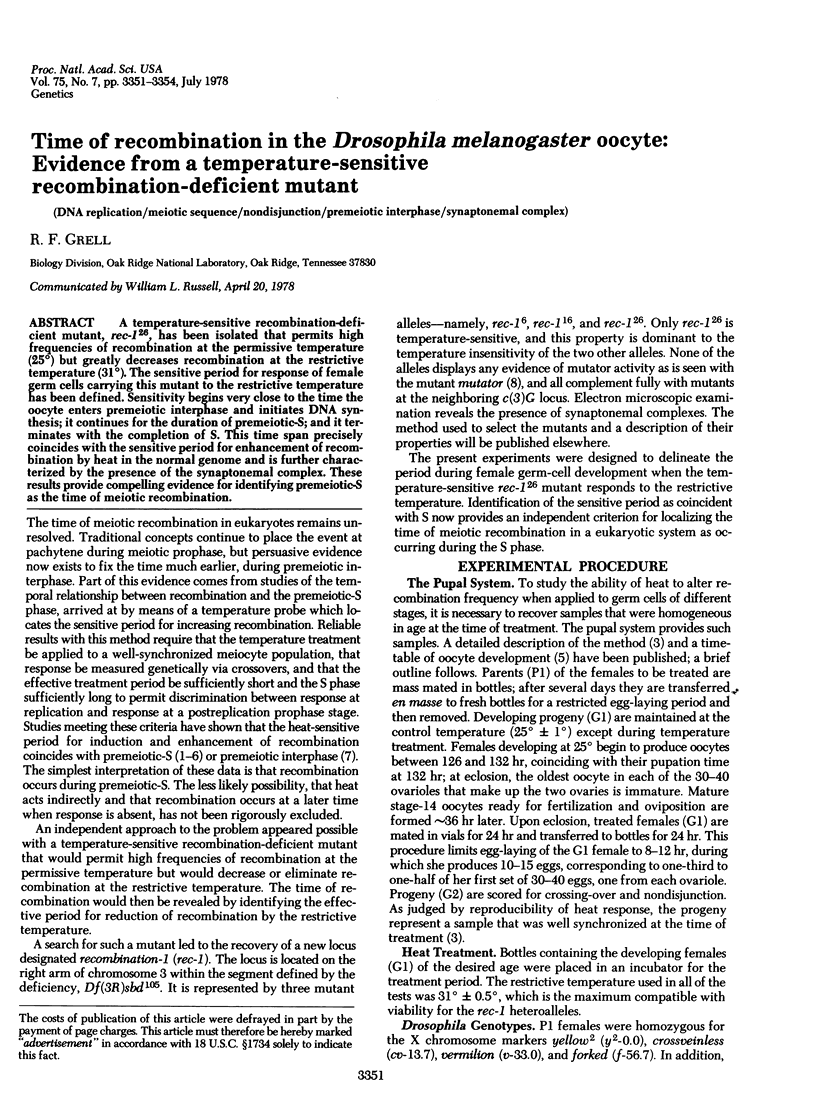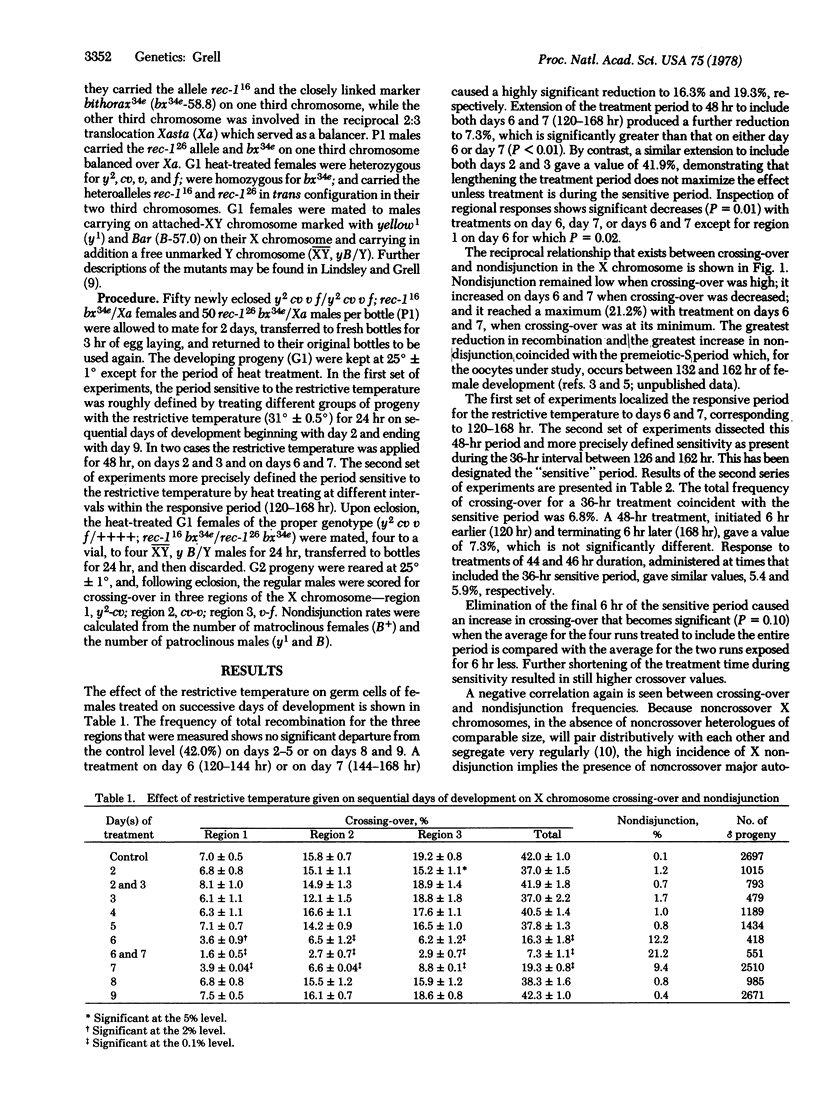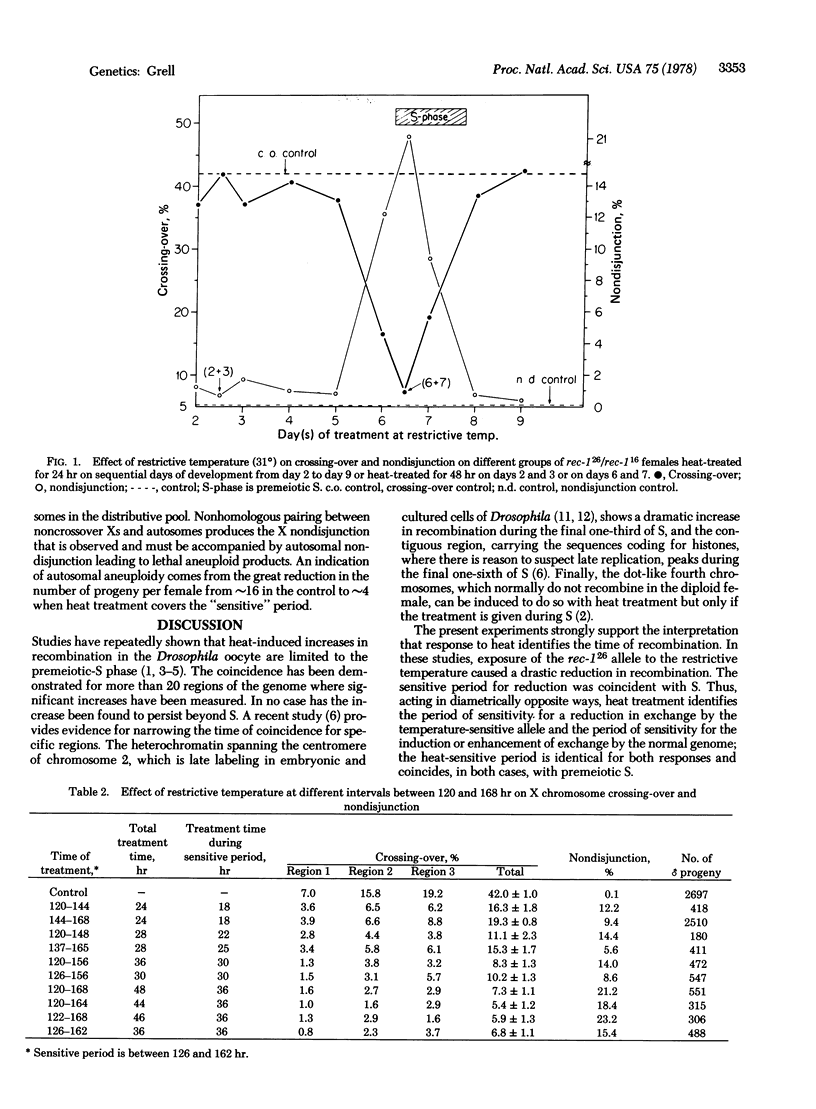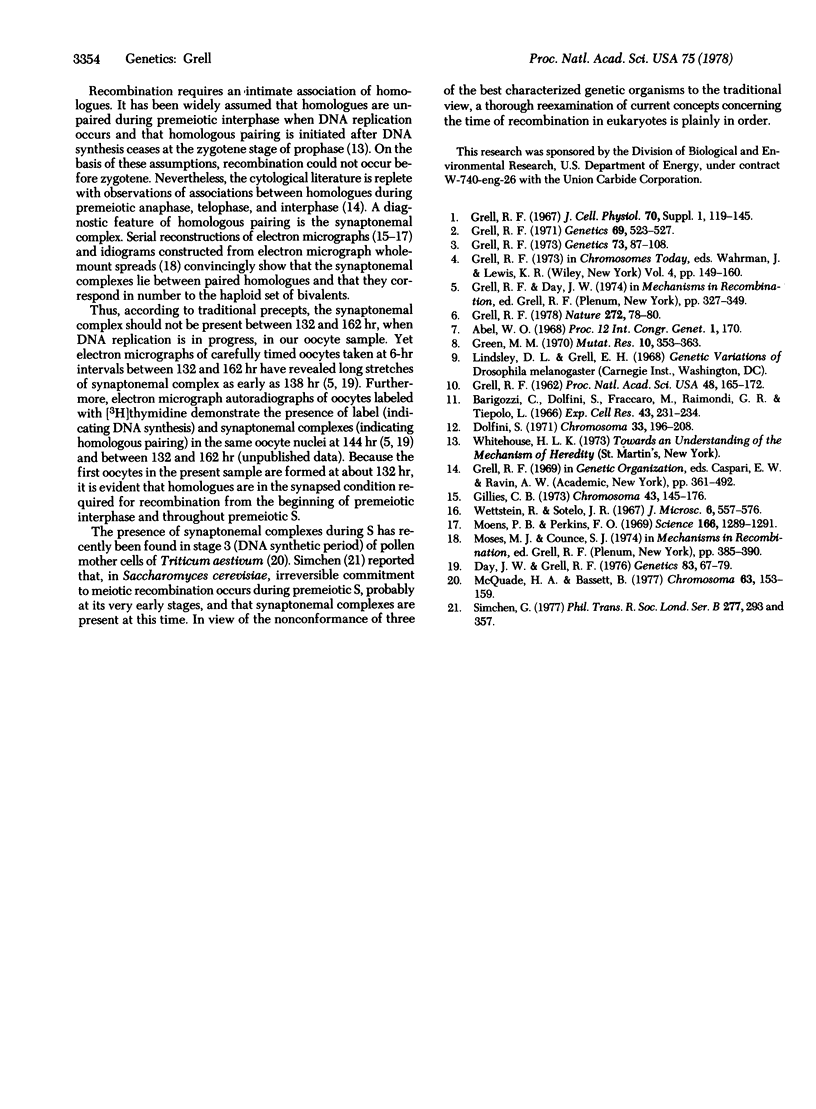Abstract
A temperature-sensitive recombination-deficient mutant, rec-126, has been isolated that permits high frequencies of recombination at the permissive temperature (25 degrees) but greatly decreases recombination at the restrictive temperature (31 degrees). The sensitive period for response of female germ cells carrying this mutant to the restrictive temperature has been defined. Sensitivity begins very close to the time the oocyte enters premeiotic interphase and initiates DNA synthesis; it continues for the duration of premeiotic-S; and it terminates with the completion of S. This time span precisely coincides with the sensitive period for enhancement of recombination by heat in the normal genome and is further characterized by the presence of the synaptonemal complex. These results provide compelling evidence for identifying premeiotic-S as the time of meiotic recombination.
Full text
PDF



Selected References
These references are in PubMed. This may not be the complete list of references from this article.
- Barigozzi C., Dolfini S., Fraccaro M., Raimondi G. R., Tiepolo L. In vitro study of the DNA replication patterns of somatic chromosomes of Drosophila melanogaster. Exp Cell Res. 1966 Aug;43(1):231–234. doi: 10.1016/0014-4827(66)90399-5. [DOI] [PubMed] [Google Scholar]
- Day J. W., Grell R. F. Synaptonemal complexes during premeiotic DNA synthesis in oocytes of Drosophila melanogaster. Genetics. 1976 May;83(1):67–79. doi: 10.1093/genetics/83.1.67. [DOI] [PMC free article] [PubMed] [Google Scholar]
- Dolfini S. Karyotype polymorphism in a cell population of Drosophila melanogaster cultured in vitro. Chromosoma. 1971;33(2):196–208. doi: 10.1007/BF00285633. [DOI] [PubMed] [Google Scholar]
- GRELL R. F. A new hypothesis on the nature and sequence of meiotic events in the female of Drosophila melanogaster. Proc Natl Acad Sci U S A. 1962 Feb;48:165–172. doi: 10.1073/pnas.48.2.165. [DOI] [PMC free article] [PubMed] [Google Scholar]
- Green M. M. The genetics of a mutator gene in Drosophila melanogaster. Mutat Res. 1970 Oct;10(4):353–363. doi: 10.1016/0027-5107(70)90048-5. [DOI] [PubMed] [Google Scholar]
- Grell R. F. Heat-induced exchange in the fourth chromosome of diploid females of Drosophila melanogaster. Genetics. 1971 Dec;69(4):523–527. doi: 10.1093/genetics/69.4.523. [DOI] [PMC free article] [PubMed] [Google Scholar]
- Grell R. F. High frequency recombination in centromeric and histone regions of Drosophila genomes. Nature. 1978 Mar 2;272(5648):78–80. doi: 10.1038/272078a0. [DOI] [PubMed] [Google Scholar]
- Grell R. F. Pairing at the chromosomal level. J Cell Physiol. 1967 Oct;70(2 Suppl):119–146. doi: 10.1002/jcp.1040700410. [DOI] [PubMed] [Google Scholar]
- Grell R. F. Recombination and DNA replication in the Drosophila melanogaster oocyte. Genetics. 1973 Jan;73(1):87–108. doi: 10.1093/genetics/73.1.87. [DOI] [PMC free article] [PubMed] [Google Scholar]
- Moens P. B., Perkins F. O. Chromosome number of a small protist: accurate determination. Science. 1969 Dec 5;166(3910):1289–1291. doi: 10.1126/science.166.3910.1289. [DOI] [PubMed] [Google Scholar]


